1: Laura Bassi - the first professional female scientist
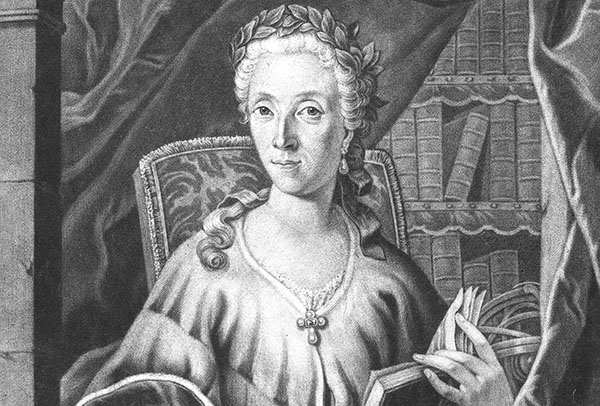
Meet the first woman in STEM... Born in 1711, Laura Maria Caterina Bassi was an Italian physicist and academic and the first woman to ever earn a university chair in a science. She earned a doctoral degree in 1732 and was the first woman to earn a professorship in physics at a university in Europe. She was also the first woman to be offered an official teaching position at a university in Europe. However, these positions were said to be honorary and not intended to set a precedent for other women. Bassi was not allowed to participate in the day to day business of the academy and while the university professorship was created specifically for her, she was not allowed to teach publicly. Catherine Lee explains how she got about this:
"To get around this prohibition, in 1749 Bassi officially opened a ‘domestic school’ in her own home. Her eight-month long course offered a more comprehensive instruction than either the university or the Bologna Institute. Students came from all over Italy and from elsewhere in Europe to study with her as her skill in combining the theoretical and experimental aspects of physics became well known. She was a key figure in introducing Newton’s physics and philosophy to Italy. She wrote extensively but is hardly known today, possibly because only four of her papers appeared in print during or after her lifetime."
- Order our free booklet of postcards with the like of Laura Bassi by heading to World-changing women: Download your free booklet of postcards.
2: Alexander Fleming - discoverer of penicillin
Who'd have thought this guy would've saved millions of people with some accidentally discovered 'mould juice'?! Sir Alexander Fleming, born in 1881, was a Scottish biologist, pharmacologist and botanist. He is best-known for discovering the antibiotic substance benzylpenicillin (Penicillin G) from the mould Penicillium notatum in 1928. This led him to win the Nobel Prize in Physiology or Medicine in 1945 with Howard Florey and Ernst Boris Chain. The latter two winners managed to isolate the antibiotic and mass produce the drug, something Fleming could not manage. Fleming was self-depreciating about his part in the development of penicillin but since he was the first to discover the properties of it he had the honour of naming it. By D-Day in 1944, enough penicillin had been produced to treat all the wounded soldiers with the Allied forces. This section from one of our articles outlines the serendipitous nature of Fleming's dicovery:
"After returning from a holiday in September 1928, Scottish scientist Alexander Fleming found something unusual in one of his petri dishes of Staphylococcus, the bacteria that causes boils, sore throats, and abscesses.
This particular dish was dotted with colonies... apart from one section of mould. The area immediately around it was completely clear, indicating the mould had secreted something that inhibited bacterial growth.
On further investigation, Fleming discovered this mould – what he first labelled ‘mould juice’ – was capable of killing a wide range of harmful bacteria.
He eventually identified the mould as being from the ‘Penicillium genus’ so named it penicillin, the group of antibiotics that continues to save many millions of lives today."
Take a look at how Fleming accidentally discovered the antibiotic that would go on to save the world in the video above.
- You can unveil six other unbelievable discoveries in our article 7 accidental discoveries that look like April Fool's Day headlines but aren't.
3: Caroline Norton - social reformer
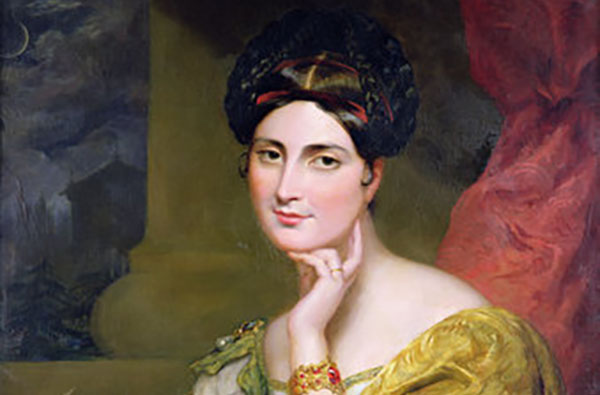
Back in the day, women were seen as men's property upon marriage so were given no rights whe it came to divorce - something Caroline Norton fought against. Born in 1808, she is famed for being a social reformer and author. Caroline Sheridan, her name before marriage, was born into a well-connected but not well-off family. She married Tory MP the Hon. George Norton, they had little in common were very unhappy. Norton subjected his wife to vicious beatings. Caroline found consolation in writing and the publication of her verses led to appointments as magazine editor which brought some measure of financial independence. Caroline left her abusive husband in 1836, leading her husband to sue her friend Lord Melbourne, the then Whig Prime Minister. While the jury disregarded the claim, Caroline was unable to divorce her husband and banned form seeing her sons. Caroline's relentless campaigning led to the passing of the Custody of Infants Act 1839, the Matrimonial Causes Act 1857 and the Married Women's Property Act 1870. Dr Catherine Lee explains what marriage and divorce were like for a woman during Caroline Norton's life:
"In mid-nineteenth century England women’s legal rights were governed by the laws of coverture. According to these, on marriage, a man and woman became a single legal entity and, as a result, a husband acquired rights over all of his wife’s property. Wives lost any power to enter into contracts or to make wills as independent people. Husbands, but not wives, could sue for divorce."
- To find out more about Caroline Norton make sure you check out this article World-Changing Women: Caroline Norton.
4: Dorothy Hodgkin - first British woman to win a Nobel Prize
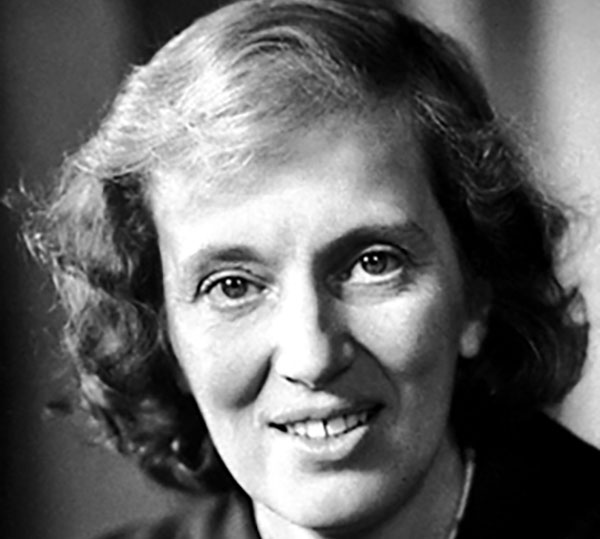
Dorothy Hodgkin, born in 1910, was a British biochemist who developed protein crystallography, she won the Nobel Prize in Chemistry for this in 1964. In 1969, five years after winning the Nobel Prize, she was able to work out the structure of insulin. X-ray crystallography became a widely used tool and was critical in later devising the structures of many biological molecules - thus allowing scientists to understand their functions. She is held up as one of the pioneering scientists in X-ray crystallography studies of biomolecules. At the age of 24, she was given a diagnosis of rheumatoid arthritis which would become worse over time in both her hands and feet. Hodgkin spent most of her time in a wheelchair but still remained active in scientific research. Clare Warren states why she thinks Dorothy Hodgkin is one of the most influential women in science:
"Not only was Dorothy Hodgkin incredibly clever but she also managed to multi task to a way that most women would never be able to, let alone any men being able to. When she first went to university she was looking after her two younger sisters at the same time so she’d have to go home in the holidays and look after them and then when she was at university she was trying to balance learning things for exams plus working in the lab. She had a family with three young children and a husband and managed to do all the household stuff as well as all her high powered research and unfortunately, of course, when she won her Nobel Prize the headlines were mother of three wins £18,750 rather than amazing scientist wins Nobel Prize, which is a bit unfortunate but shows the sign of the times really."
- You can find out more about Dorothy Hodgkin and more pioneering female scientists with our podcast collection Women in Science.
5: Alan Turing - codebreaker and war hero
Alan Turing, born in 1912, had an extensive and impressive CV including titles such as: computer scientist, code breaker, mathematician, logician, cryptanalyst and theoretical biologist. He is widely considered to be the father of computer science and artificial intelligence. During the Second World War, Turing worked at the home of the code breakers, Bletchley Park. He devised many techniques for solving Nazi Germany's ciphers and produced an electromechanical machine that could find the settings for the German Enigma machine. It has been estimated that his computer work shortened the war in Europe by as many as four years and allowed allies to win the war. Despite his heroic work he was found guilty of homosexual acts a few years later and died from what was thought to be suicide by cyanide poisoning. Queen Elizabeth II granted him a posthumous pardon in 2013. Professor Timothy Chappell explores his time at Blechley Park:
"At Bletchley Park in Buckinghamshire in 1940, large numbers of academics were seconded from British universities to work on cracking the codes that the Germans were using in their war effort. Alan Turing was among them and in Hut 30 with other workers he set to work trying to decipher the results of the German enigma machine. This machine produced a whole variety of different codes and the problem was just not to decipher what was being said on any particular day, but also to decipher the settings of the enigma machine that set the particular code for that particular day. The German’s thought that it would take hundreds of years and hundreds of workers for this problem to be solved by British intelligence they were therefore remarkably free and easy in the use of their enigma codes. Alan Turing and his co-workers made substantial progress on cracking the enigma codes within a matter of months, and within a matter of months they were able to relay it back to the British admiralty and to the British government a wide variety of militarily crucial kinds of information. Alan Turing brought to the decoding of enigma not only a powerful training in formal logic and mathematics but also an almost unique ability to think in creative and lateral ways. Decoding’s of what was produced by the enigma machine would often produce still hundreds of possible readings of the messages that were coming out. Alan Turing devised the idea of eliminating all those options that were still left as decoding’s that generated an inconsistency thus he was able to use the strictly formal logical notion of logical inconsistency as a way of cracking messages about the position of U-boats in the north sea."
Uncover Alan Turing's simple explanation on why tigers are stripey but leopards are spotty in the video above.
- Examine Turing’s troubled personal life, his role at Bletchley Park, his ideas on artificial intelligence and ideas on his legacy in our podcast collection Alan Turing: life and legacy.
6: Chris Hoy - the most decorated Olympic cyclist ever
Chris Hoy is an eleven-times world champion and six-times an Olympic champion in track cycling. Boasting a total of seven Olympic medals, six gold and one silver, Hoy is the most decorated Olympic cyclist of all time. He is joint holder of most medals won by any British athlete in the Olympic Games with fellow cyclist Sir Bradley Wiggins.
In the video above Chris Hoy speaks about how using a sport's psychologist, Steve Peters, allowed him to up his game in the velodrome. This was taken as part of Chasing Perfection, our series made with Channel 4 and presented by Michael Johnson.
- Check out our full collection of eight videos including an array of athletes and sport experts Chasing Perfection: How do athletes become champions?
7: Ada Lovelace - the first computer programmer
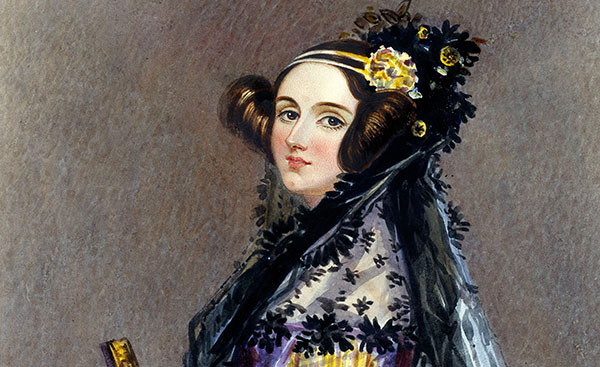
Born Augusta Ada King-Noel, Countess of Lovelace, Ada was the only legitimate child of Lord Byron but she definitely didn't follow in his literary footsteps. Ada was made to study and excel at mathematics by her mother; who saw logic as a cure for the madness that had afflicted Lord Byron. She met the most respected mathematichian of that time, Charles Babbage, when she was only seventeen and had seen some of the workings of the Difference Engine, an early computer he was attempting to make. Her notes on the engine include the first algorithm intended to be carried out by a machine. For this reason, she is often seen as the first computer programmer. Mike Richards discusses her workings:
"In 1842 Ada translated Luigi Menabrea’s description of the Analytical Engine ‘Notions sur la machine analytique de Charles Babbage’ from the original French. At first she was content to perform only the translation, but at Babbage’s instigation, she began to add extensive annotations to the original text.
These ‘algebraic working’s are what we would now call a computer program – they were the commands that would be punched into Jacquard cards and fed into the Analytical Engine. Charles Babbage and Ada Lovelace had written the world’s first computer program – and they didn’t have a computer!"
- Discover the intriguing story of Ada Lovelace and Charles Babbage, and their role in the 19th century development of the computer with our article Happy 200th birthday Ada Lovelace.
8: Frederick Sanger - expert in all things to do with DNA
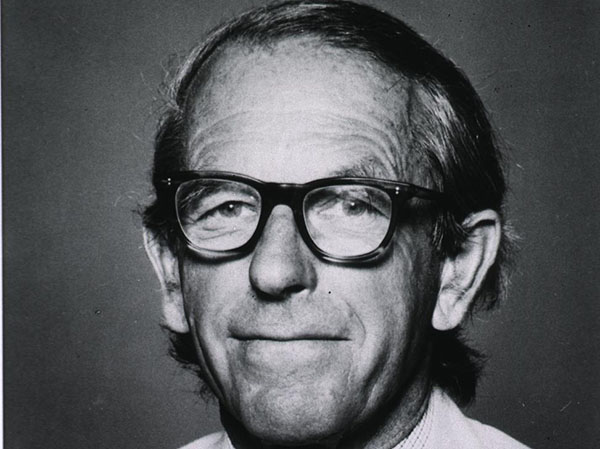
Frederick Sanger, born August 1918, was a British biochemist who won the Nobel Prize in Chemistry twice. In 1958, he was awarded a Nobel Prize in chemistry for his work on the structure of proteins - particularly insulin. In 1980, he shared half of the chemistry prize with Walter Gilbert for work on base sequences in nucleic acids. Many of the disease treatments now being developed for Alzheimer’s disease, cancer and cystic fibrosis would not be possible without Sanger's research. He died in 2013. In his obituary he described himself as "just a chap who messed about in a lab" and "academically not brilliant"! Dr James Bruce explains the legacy of his work:
"Sanger was very much a solver of problems and, in coming up with simple and uncomplicated solutions, allowed his work to be applied to other similar problems. It is therefore a fitting tribute and an apt reflection of his work that nearly 50 years after he developed the methods for DNA sequencing it is still being used today."
- To read the full article on Frederick Sanger's work on DNA head over to our article The legacy and impact of Frederick Sanger.
9: David Bowie - musical genius and innovator

This man probably doesn't even need an introduction, but here we go... Born David Robert Jones in January 1947, David Bowie was a singer, songwriter and actor whose career spanned five decades. His career was peppered with reinvention, clearly the likes of Lady Gaga, Madonna and many other artists try to copy Bowie's blueprint. Space Oddity was his first UK top-five entry in July 1969. After some experimentation, he re-emerged in 1972 with his androgynous alter ego Ziggy Stardust, a new single Starman and album The Rise and Fall of Ziggy Stardust and the Spiders from Mars, which made him greatly popular. His styles shifted throughout the years earning him new fans and a solid reputation. Dr Frank Monaghan explains his creative and innovative style here:
"He seems to have seen identity as something constantly on the horizon of our perception, always becoming, never merely being – an arrival that always included its departure: ‘When the kids had killed the man / I had to break up the band’ as he sang of his most famous creation, Ziggy Stardust in 1972. This might explain why the extra-terrestrial (whether human or alien) was an abiding metaphor he returned to from the early days of Major Tom in the song Space Oddity (1969) through his re-appearance in Pierrot costume on Ashes to Ashes (1980) and most recent embodiment in the video to his latest single Blackstar in which a woman approaches a figure in a spacesuit lying on the ground, she opens the visor to reveal a jewel-encrusted skull which is then carried off in a glass box as an object of worship – perhaps he was telling us that this was to be the final transformation."
- Explore our collection of articles on Bowie's life and work following his death in January 2016 by getting started on this article David Bowie: identity is creativity.
10: Madam C.J. Walker - USA's first female self-made millionaire
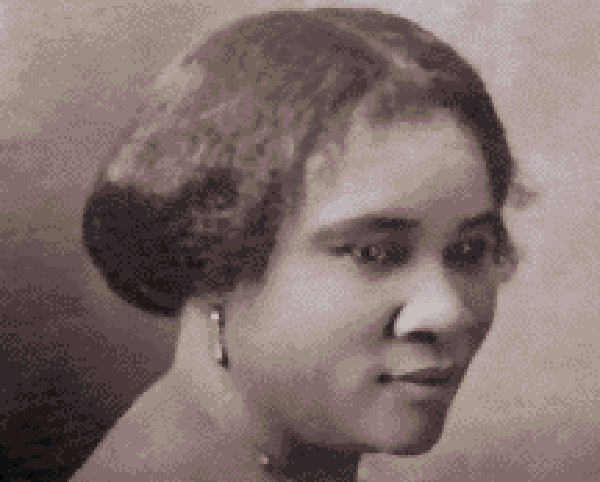
Madam C.J. Walker had a real rags to riches story... Born Sarah Breedlove in 1867 in Louisiana, to former slaves, the later named Madam C.J. Walker was orphaned at the age of seven - she worked as a maid from the age of ten to earn her keep. By her fourteenth birthday, Sarah had married and later gave birth to a daughter. After being widowed in 1887 she moved with her daughter to St. Louis and earned $1.50 a day as a laundress and cook, struggling to send her daughter to school. Things began to look up when she got a job as an agent for a hair-restoring product and married Charles Joseph (C.J.) Walker. Inspired, she decided to to mix her own hair-restoring recipe, using products from Africa around the time of her marriage. Due to the success of the product, she branched out on her own, with ‘Madam Walker’s Wonderful Hair Grower’. She went on to make a fortune out of the shampoos and ointments developed for black hair. Dr Catherine Lee elaborates:
"By 1915 Madam C. J. Walker was by far the wealthiest African American woman in the country. She was invited to meetings of black leaders and was to lecture on business and politics. She spoke out on the social conditions endured by African Americans and devoted particular attention and money to the campaign to make lynching a federal crime."
- To find out more about Madam C.J. Walker and other incredible women throughout history visit our interactive How Women Changed the World.
The Open University launched OpenLearn, a website dubbed 'The home of free learning', in October 2006 and since then it has gained over 40 million unique users and won awards recognising its array of valuable free learning content.
To celebrate OpenLearn's 10th anniversary, we are releasing a new listicle centralised round the number 10 on the 10th of every month in the 10 month lead up to October. Check out our Ten Years of OpenLearn hub to enjoy even more free learning!
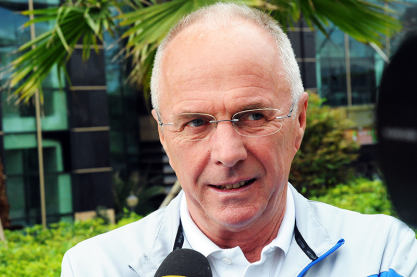

Rate and Review
Rate this article
Review this article
Log into OpenLearn to leave reviews and join in the conversation.
Article reviews
Hello Eddie
Thank you for spotting this, and letting us know.
The date has been corrected now,
best wishes,
OpenLearn Moderator